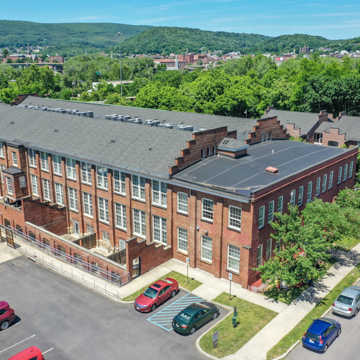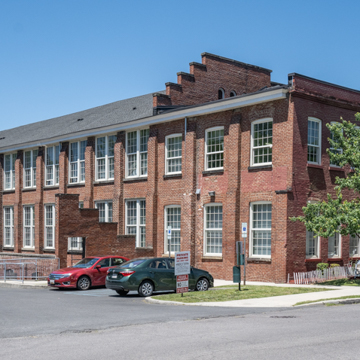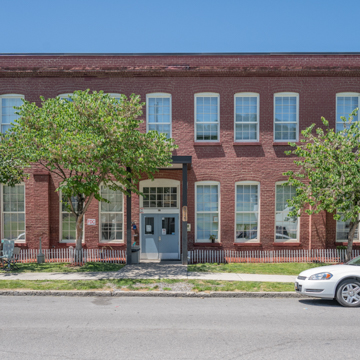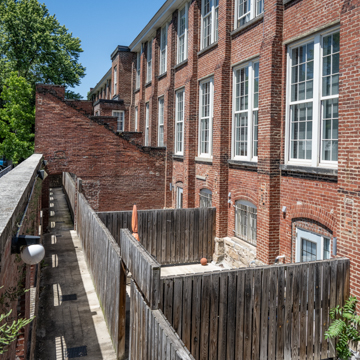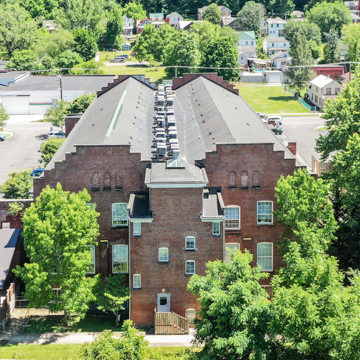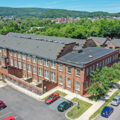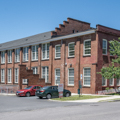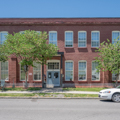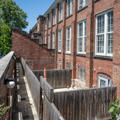Located in south Cumberland in a residential neighborhood of small workers’ houses, Klots Throwing Mill is a surviving example of the once-prevalent industrial presence in the city. Built as a silk-thread spinning mill employing mainly women, as was typical in the textile industry, the Cumberland plant was one of two owned by the company in Maryland. The second in Lonaconing was built in 1907 and still stands, albeit in ruined condition. The two-story, brick and timber frame Cumberland mill housed silk vaults and soaking facilities in the basement, offices on the first floor, and drying rooms on the second. Behind a firewall the larger windows and double-gable roof demarcate the production areas, which had machinery shafting in the basement, spinning on the first floor, and winding and doubling on the second. New York City architect and businessman Lansing C. Holden Sr. was the architect for a one-story 1909 repair shop addition on the south (demolished), and the National Register nomination attributes the rest of the mill to him.
The Klots Mill was adjacent to the main B&O line with its own spur line, which facilitated delivery of raw materials and fuel for the steam boilers and shipping of completed product. Additional Klots mills were located in Pennsylvania, Virginia, and Massachusetts, for a total of fourteen plants and six thousand employees during the company’s heyday in the late 1920s. Klots went into bankruptcy in 1932, and the mill was used to manufacture a variety of fabrics in later decades. Textile production halted in 1972, and the building was used for storage until conversion into low-to-moderate-income loft apartments.






